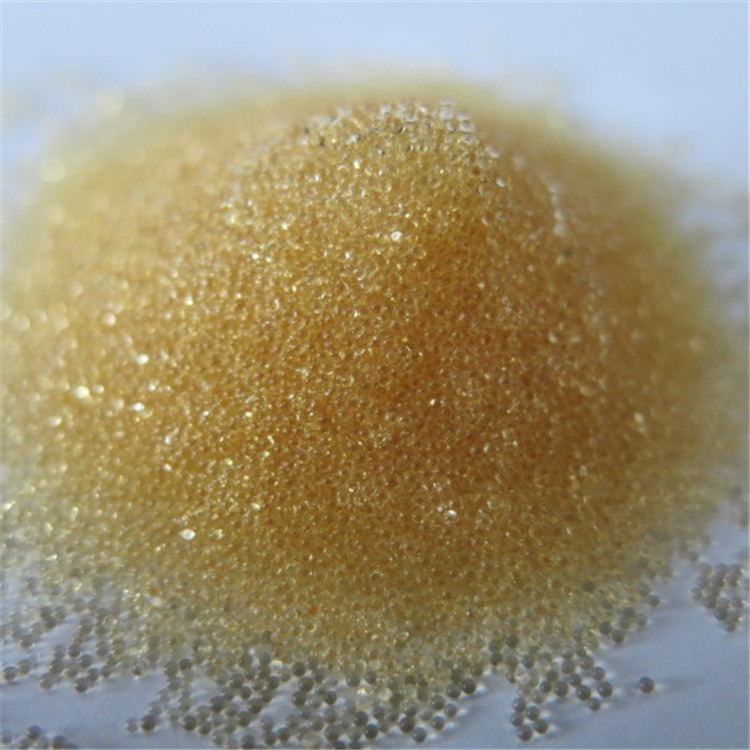Common problems and treatment methods of ion exchange resins
Ion exchange resins are widely used, such as separation, purification, recovery, catalysis in the industrial field, purification and enrichment in chemical analysis. With the continuous development of ion exchange technology, the application of resins in the field of water treatment has been continuously expanded, and its superiority has been increasingly demonstrated, with the advantages of deep purification, high efficiency and comprehensive recovery.
1. Pretreatment of resin before use Industrial products of ion exchange resins often contain a small amount of organic oligomers and inorganic impurities. In the initial use, they will gradually dissolve and release, affecting the water quality or product quality of the effluent. Therefore, new resins must be pretreated before use. The specific methods are as follows:
(1) After the resin is loaded into the exchanger, backwash the resin layer with clean water at an expansion rate of 50-70% until the effluent is clear, odorless and free of fine resin.
(2) Use a 4-5% HCl solution of about 2 times the volume of the resin to pass through the resin layer at a flow rate of 2m/h. After all the resins are passed through, soak for 4-8 hours, drain the acid, and rinse with clean water until the effluent is neutral. The flushing flow rate is 10-20m/h.
(3) Use 2-5% NaOH solution with a volume of about 2 times the resin volume, and pass and soak it according to the above method of adding HCl. Drain the alkali solution and rinse with clean water until the effluent is neutral. The flow rate is the same as above. If the acid and alkali solution can be repeated 2-3 times, the effect will be better. When the pretreated resin is put into operation for the first time, the amount of regeneration agent should be appropriately increased to ensure that the resin is fully regenerated.
2. Treatment method for resin silicon contamination
Silicon compound contamination occurs in strong base anion exchangers, especially in equipment and systems where strong and weak anion resins are used together, which often results in a decrease in the silicon removal efficiency of the anion exchanger. The reason for this contamination is insufficient regeneration or the resin is not regenerated in time after failure. The treatment method can be soaked and dissolved with dilute warm alkali solution. The concentration of the alkali solution is 2% and the temperature is about 40 degrees. When the contamination is serious, a heated 4% sodium hydroxide solution can be used for circulation cleaning.
3. Treatment methods for iron contamination of resin
The iron in cation resin mainly comes from iron ions in raw water, especially when iron salt is used as coagulant. The iron in anion resin mainly comes from regeneration liquid. The color of the resin contaminated by iron becomes darker, the exchange capacity decreases, and the degradation of anion resin is accelerated. The method of removing iron compounds is usually to soak the resin in high-concentration hydrochloric acid (10-15%) with inhibitors for 5-12 hours, or even longer. It can also be treated with complexes such as citric acid, aminotriacetic acid, and EDTA.
4. Treatment methods for suspended matter pollution
The suspended matter in the raw water will clog the pores of the resin layer, thereby increasing its water flow resistance, and will also cover the surface of the resin particles, thereby reducing its working exchange capacity. To prevent suspended matter from clogging, the main thing is to strengthen the pretreatment of the raw water to reduce the content of suspended matter in the water. To remove suspended matter in the resin layer, methods such as increasing the number and time of backwashing or using compressed air to scrub can be used.
5. Treatment of calcium sulfate pollution
When there is sulfuric acid regeneration of calcium cation resin, if the operation is not done properly, calcium sulfate precipitates may be precipitated in the resin layer. At this time, not only is it difficult to clean after regeneration, there is always hardness in the eluate, and the exchange capacity of the resin is reduced. Measures to prevent calcium sulfate precipitation are, first, to reduce the concentration of sulfuric acid in the regeneration solution, and second, to speed up the flow rate of the regeneration solution. A step-by-step regeneration method can also be used, with the concentration gradually increasing and the flow rate gradually slowing down. Once calcium sulfate precipitation is found, it can be soaked in a -10% hydrochloric acid solution for 1-2 days, or regenerated several times with hydrochloric acid.